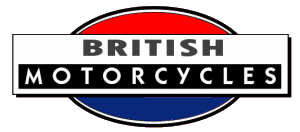

CCM motorcycles were produced from 1971 to 1980, and then from 1987.
The initials come from Clews Competition Machines, a firm founded by Alan Clews, of Bolton, Lancashire, and first called Clewstrokes.
1972 As the Stroka had been a success, the first CCM machines were produced, based on the BSA B50 engine, at either 499cc or 608cc, but with many refinements and modifications. Throughout the 1970s those big four-stroke motorcycles were very successful and late in the decade a trials model joined the list, followed by two-stroke scramblers fitted with Italian Hiro engines.
1980 Financial problems caused CCM to be taken over by Armstrong, although the machines kept the name for the following year. After that they were labelled Armstrong-CCM, and in 1981 the engine unit was changed to the Austrian Rotax four-stroke single.
1987 Alan Clews bought his old company back and built it up by selling spares and Armstrong machines on back-order.
1989 CCM returned to the world of competition, with a range still using the Rotax engine.
1990s They continued with a range of trials and motocross models. The trials version had a two-stroke engine and the motocross models used a big four-stroke single with capacity ranging from 500cc to 590cc.
1997 A 'super moto' model was added. This was intended for road use and was excellent - if rather expensive. The motocross model was also available in Enduro or Rallye Raid trim, and fitted with a 560cc Rotax engine. After Rotax ceased production, CCM began to use Suzuki engine units. There were plans for a super trail model with a huge Swedish V-twin engine, but nothing came of it.
2000s Since the beginning of the new century, the company continued building machines with a Suzuki 664cc, a 400cc single, and more recently a handsome 599cc watercooled sports single named the Spitfire in various guises.
Note: The company has its own web site at ccm-motorcycles.com
Source: Graces Guide
If you have further information or a query related to this page, please contact us